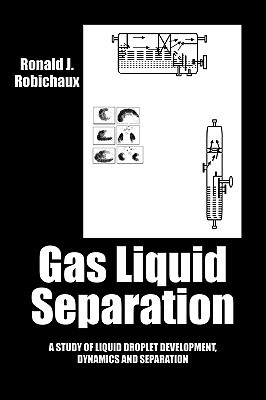
- We will send in 10–14 business days.
- Author: Ronald J Robichaux
- Publisher: Outskirts Press
- Year: 2009
- Pages: 404
- ISBN-10: 1432740296
- ISBN-13: 9781432740290
- Format: 15.6 x 23.4 x 2.1 cm, softcover
- Language: English
- SAVE -10% with code: EXTRA
Reviews
Description
Vapor Liquid Separation Author Contact: Ronald J. Robichaux1522 Savannah Drive, Garland, Texas 75041
E-mail: [email protected] My experience with separators led me to compile design information for the precise design of this type of equipment. These devices seem simple in their operations. However I have seen a number of them fail to provide the performance required in the process. Working with consultants, their many suggestions and rules of thumb to resolve the issues, has left me with concern as to how to best approach a design for a proper operating separator. I studied the works of many Engineers and designers and collected information from all the manufacturers I worked with in designing separators for my projects. I have read and collected many articles on the subject of separator design. In 1984 I had the opportunity to accept a position with Perry Equipment Corporation in Mineral Wells, Texas. The range of designs, research efforts and field trouble shooting left me with the understanding that "rules of thumb" are useful in a limited set of circumstances. Fortunately for the industry these set of circumstances are sufficient at about 75 to 90 percent of the time. One of the tasks I was given, while in their employ, was to attempt to place a scientific approach as to why these devices proved so successful in most situations, but failed in other situations. In order to develop a better understanding of the design parameters I wanted to know the physical properties of the fluids and their effect associated with separator failures and efficiencies.
EXTRA 10 % discount with code: EXTRA
The promotion ends in 8d.14:36:37
The discount code is valid when purchasing from 10 €. Discounts do not stack.
- Author: Ronald J Robichaux
- Publisher: Outskirts Press
- Year: 2009
- Pages: 404
- ISBN-10: 1432740296
- ISBN-13: 9781432740290
- Format: 15.6 x 23.4 x 2.1 cm, softcover
- Language: English English
1522 Savannah Drive, Garland, Texas 75041
E-mail: [email protected] My experience with separators led me to compile design information for the precise design of this type of equipment. These devices seem simple in their operations. However I have seen a number of them fail to provide the performance required in the process. Working with consultants, their many suggestions and rules of thumb to resolve the issues, has left me with concern as to how to best approach a design for a proper operating separator. I studied the works of many Engineers and designers and collected information from all the manufacturers I worked with in designing separators for my projects. I have read and collected many articles on the subject of separator design. In 1984 I had the opportunity to accept a position with Perry Equipment Corporation in Mineral Wells, Texas. The range of designs, research efforts and field trouble shooting left me with the understanding that "rules of thumb" are useful in a limited set of circumstances. Fortunately for the industry these set of circumstances are sufficient at about 75 to 90 percent of the time. One of the tasks I was given, while in their employ, was to attempt to place a scientific approach as to why these devices proved so successful in most situations, but failed in other situations. In order to develop a better understanding of the design parameters I wanted to know the physical properties of the fluids and their effect associated with separator failures and efficiencies.


Reviews